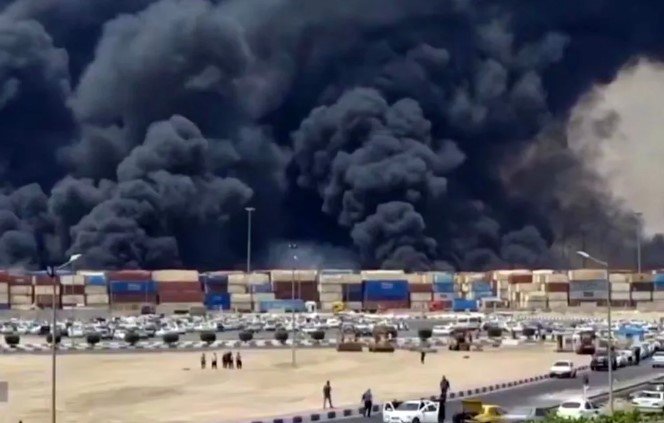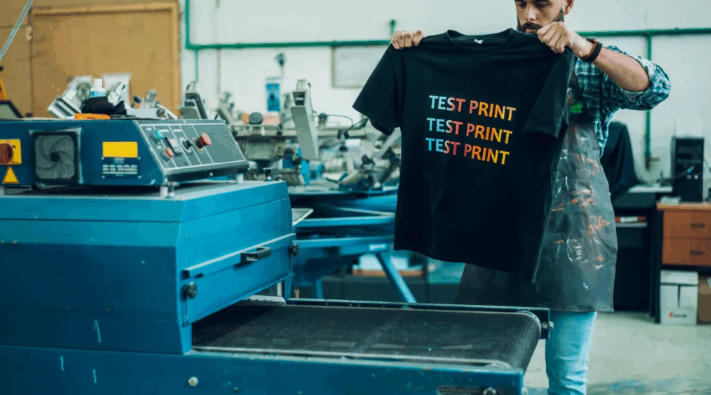Vast Devastation Following Massive Explosion as Over 300 Rescue Workers are Deployed to the Port
A large explosion at a port located in Southern Iran resulted in panic as over 500 people were injured and a fire broke out. At Shahid Rajaee Port, which is adjacent to the coastal city of Bandar Abbas in Iran, the incident caused great concern over the infrastructure and maintenance of ports in the region, as construction ports are of vital importance to interstate trade and commerce.
An eyewitness recalled how they saw a grand display of colorful smoke over the port area. Heavy flames threw shipping containers around like it was a game, while cars were burned to the shell in the surrounding area. Residents claimed the explosion was so strong that the world felt like its base was molded with jam, and people mistook it for an earthquake.
What We Know So Far
Eyewitness accounts of the port describe an explosion occurring around midday local time. Early reports indicate a fire started within a storage room holding significant amounts of fire-prone materials, which was followed by a series of secondary explosions. Since Iranian authorities have not confirmed the reason for the explosion, some people close to the port’s administration attribute the cause to dangerous and inappropriate storage conditions of various chemicals.
As is customary for such incidents, emergency services were stationed on site. Their task of dousing the flames, which were already scaled to a disaster level, was alongside paramedics tending to an endless stream of incoming firefighters. Since the paramedic teams did not stop coming alongside more usual firefighters tending to the ground and volunteering rescuers tirelessly looking for drowning chaos of the collapsed warehouse and burnt containers in warehouse-slag and cargo-back slab sand deft gorgonomes cans battled the globe for weeks.
Health department representatives confirm citing information from various hospitals as to satisfying numerous burns, lacerations, headaches, smoking, or exhalation of smoke and toxic smoke. Despite several patients remaining crucially stricken, steam controlled continually feared that an uncounted victims ‘ remains would be raised in emerging blast rounds in the hours ahead.
Eyewitness Accounts
First dockworker Ali Rezaei narrates the story before the blast occurs.
“I was in the middle of moving some goods on a truck when an explosion went off. Within moments, I was surrounded by fire and smoke. People were running and screaming. Some were bleeding, others seemed paralyzed,” he stated, feeling stirred even after a couple of hours.
A different witness, a captain of the ship who was anchored nearby, Farhad Davoudi, remembered the following:
“We felt the impact aboard the ship. Then, things got out of control. Windows burst and alarms started ringing. We were panicking and for a moment, we thought we were being attacked.”
Clips posted online capture the moment of the blast, filled with chaos as people were being evacuated.
Government Action
Iranian President Ebrahim Raisi has ordered the investigation of the incident. In case neglect is found anywhere, those responsible will be subject to action.
In a telecasted statement, he made promises saying, “We need to know what went wrong so that we can do something to prevent this from accelerating. We focus on protecting the lives of the citizens and the safety of our ports due to their fragile nature.”
Local authorities have enforced a curfew and declared a state of emergency in Bandar Abbas, warning citizens to refrain from venturing outdoors because of smoke and the possibility of further blasts. All educational institutions and commercial activities within a 5-kilometer radius of the port have also been suspended until further notice.
At the same time, the Iranian Red Crescent has mobilized to the region, setting up emergency response tents for aid in triaging the injured as well as providing supplies to the blast survivors.
Potential Factors
The investigations into this incident are still in their initial stages, however, an emerging theory cites dangerous material negligence regarding storage as a principal factor. There is also a broader concern from the experts regarding port functionality, indicating ports in Iran, similar to several other ports in the region, are often plagued with inadequate infrastructure and a lack of stringent oversight.
A port operation safety expert, Dr. Samira Nasiri, has provided the following statement:
“Strict guidelines are required regarding the storage and moving of combustible materials. There is a possibility that such guidelines were not followed due to some form of negligence or a deeper systemic problem, which would pose a significant threat,” she said.
While some of the security analysts claim further examination is necessary, the Iranian authorities have urged refraining from premature conclusions due to a lack of evidence.

Impact on Trade
Shahid Rajaee Port holds strategic importance in international trade for Iran, as it receives and sends around fifty percent of Iran’s international commercial shipping. As for now, this explosion would heavily impede the operations of the port, further worsening the nation’s economy, which is in shambles due to international sanctions and internal conflicts.
Some international shipping firms have been broadcasting Iranian port services as they await security evaluation. In parallel, other essential port operations are being assessed for their supply chain impact on the overall security of Persian Gulf ports.
Economic analyst Mahmoud Karimi stated
“Impact of even limited duration closure in port operations can pose risks for some sectors, such as food imports, which depend on port operations, such as manufacturing. These timelines are particularly unfortunate due to how unstable the world’s political climate is currently.”
Table of Contents
International Reaction
Global platforms have swiftly responded with messages of assistance, support, and claims of help as a misguided way of aid justification to justify malicious agendas.
The United Nations has issued a statement to directly sympathize with the victims, both silently and publicly, on behalf of every member, claiming they stand with the accused. Marking themselves as aides who can be called upon whenever aid is needed. 216 countries signed the UN charter stating they would offer aid when requested, however, they didn’t make it clear whether it was on behalf of all member states.
More condescending support came from regional rivals that the country has reluctantly adopted over the last two decades, marking history with Qatar, boasting territory along the Persian Gulf. The United Arab Emirates, along with Qatar, displayed a glimpse of a strange, overriding regional divide, offering logistical help for the aftermath.
The incident was labeled as “tragically unfortunate” by Josep Borrell, the European Union’s High Representative for Foreign Affairs, who goes on to state there is a need for international collaboration regarding the improvement of safety standards in ports worldwide.
Iran is dealing with the aftermath of an issue while still needing to solve the problem of port safety standards and emergency responsiveness. As per the experts, this event should lead to a change of mind not solely for Iran, but for the entirety of the Middle East, especially countries with ports storing hazardous goods amidst heavy population.
This public discontent is further exacerbated by the fact that Iranians are angered by the lack of transparency and necessary reforms, calling on social media. Accounts on Iranian Twitter equivalents have been flooding with heart-wrenching pictures and using the hashtag #PortExplosion while calling for responsibility and demanding better conditions to be put in place.
With time, information surrounding the individuals affected, the detailed motivations behind the explosion, and Iran’s strategy to cope with these issues in the future is expected to surface.
At this moment, a country mourns, while families await and hope for news about missing relatives, and recovery workers tirelessly navigate the ruins, once a vibrant hub of trade and enterprise, now a scene of devastation.



